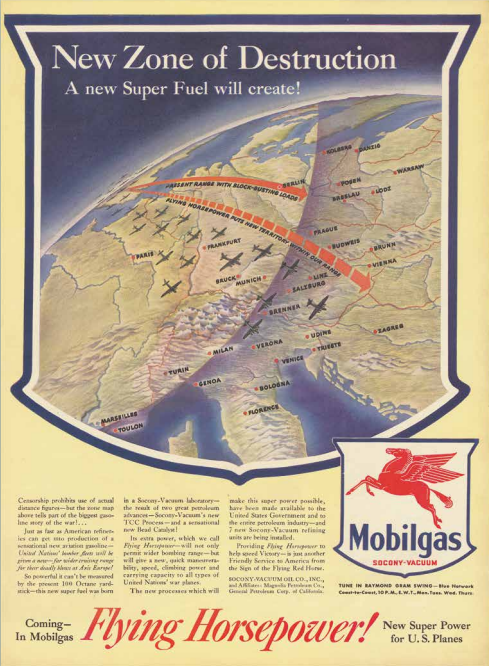War success as publicity
War has always acted as a catalyst for technological innovation. With this in mind, the US developed a more efficient fuel that enhances flying range. This ‘super fuel’ has a higher octane rating, which means greater ‘flying horsepower’, speed and payload and increased range, without requiring a more powerful engine. B17s, also known as ‘flying fortresses’, are now not only capable of bombing Berlin and Munich but can also reach Danzig and Vienna. This weakens Germany’s war industry and allows ‘terror bombing’ of German cities. The fact that a company would boast about its innovation, linking it to Allied airspace dominance, in an advertisement is new. This propagandistic advertisement glosses over the terrible reality. The ruthless battle culminates in the Hamburg Feuersturm (1943; see map 21) and the annihilation of Dresden in February 1945. In both cases, casualties were mainly civilian. In practice, terror bombing proved to boost morale rather than weaken it.

Mobilgas (advertiser), Life Magazine, New Zone of Destruction a new Super Fuel will create!, (New York 1943). Coll. S/T W.1p.11.35 x 25.5 cm.
